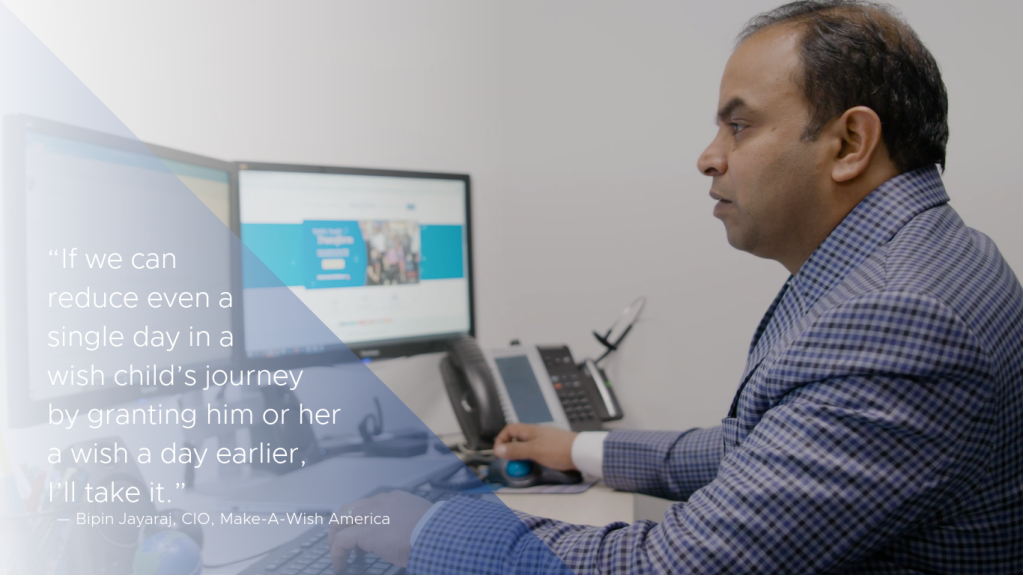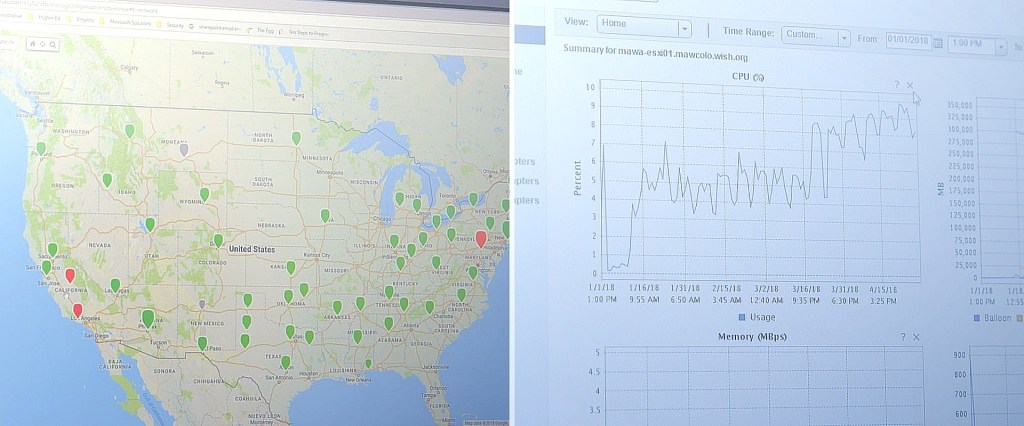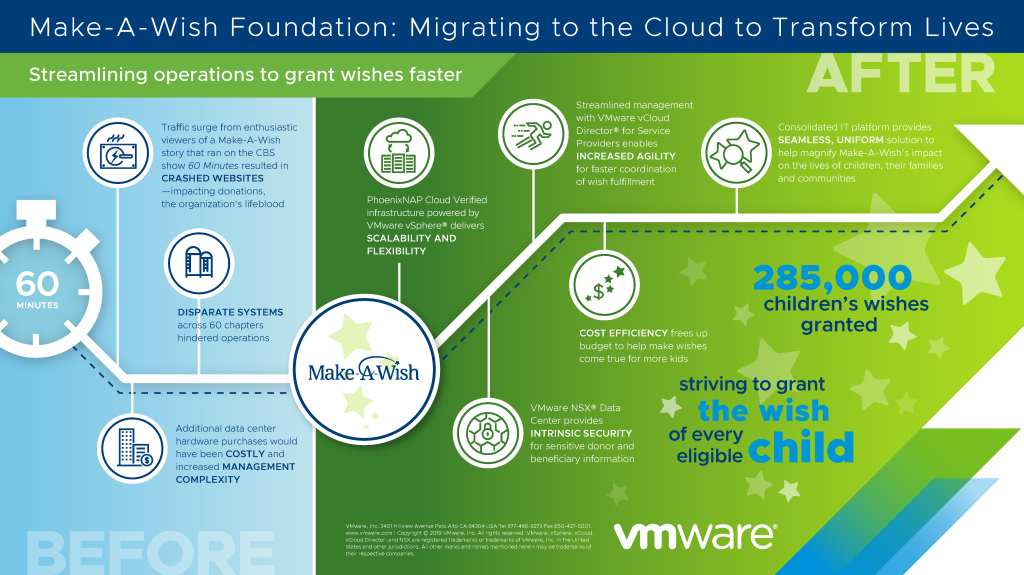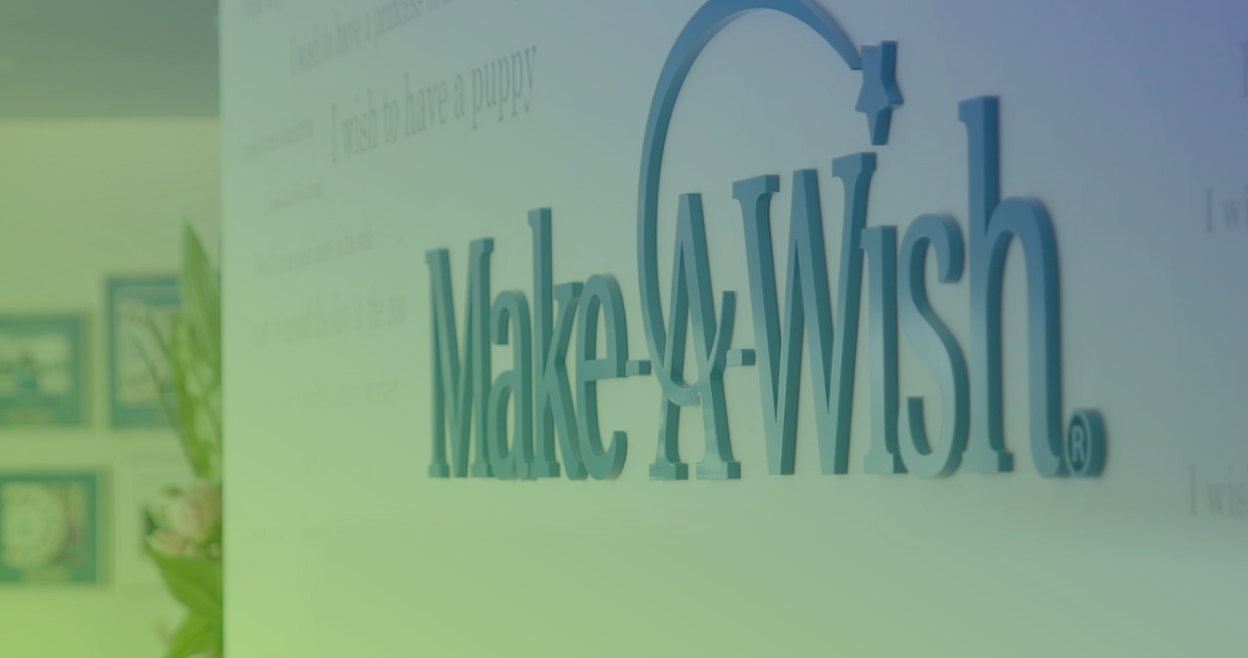Wishes can’t wait for children battling critical illnesses. For these kids, a wish can help them feel better and give them the hope and strength they need to fight harder against an illness.
This is why Make-A-Wish wants to grant the wish of every eligible child – to ensure they experience the impossible. Currently, Make-A-Wish only has the resources to be able to grant wishes to half of the 27,000 children diagnosed with a critical illness.
The nonprofit organization’s leaders constantly weigh this cost against other expenditures. Upgrade IT infrastructure? Or grant another wish?
In the past, IT made do with what they had. That changed as leaders learned that investing in IT could mean granting many more children’s extraordinary wishes.
Everything Changed in 60 Minutes

Make-A-Wish America receives the most donations during end-of-year holidays. In 2015, the organization earned national publicity that unfortunately crashed the website during this critical time.
“Make-A-Wish was featured in a CBS ‘60 Minutes’ episode and, interestingly, got a lot of hits. Unfortunately for the IT team, the whole website crashed,” recalls Bipin Jayaraj, CIO of Make-A-Wish America. “It probably led to a lot of dollars missed, in terms of donations.”
Leadership then clearly understood the critical role of IT infrastructure. That support, along with year-over-year revenue growth, put IT in a position to overhaul its technological resilience. “We’re always trying to provide resiliency to kids. And we thought, from an organizational perspective, we need to be building those things internally, too,” he says.
Step one: consolidate.
The U.S. wish-granting organization operates as a federated model. Make-A-Wish America’s National Office in Phoenix acts as the central, strategic, fundraising arm of the organization. Meanwhile, 60 local chapters across the country grant wishes, in accordance with nationally-established guidelines. Each chapter independently operates its own IT infrastructure, applications and vendor solutions.
Instead, Jayaraj thought, what if Make-A-Wish America IT operated like an enterprise IT organization? He envisioned the national office providing infrastructure services for all 110 physical locations in North America.
Consolidating to a single solution and application stack would eliminate redundancies and save money. “Leave the operational IT minutiae to me. I’ll let the chapters go do what they do best, which is granting wishes,” he explains. “That’s a better way to spend time and effort than having a duplication of efforts.”
By centralizing and modernizing data center operations, he could streamline management and strengthen security. And if that solution were based in the cloud, IT could scale to support growing needs.
Commencing a Cloud Journey
Jayaraj’s team consolidated servers and data across chapters into a hybrid cloud infrastructure: part on premises and part in a colocation run by PhoenixNAP, a VMware Cloud Provider. On that cloud foundation, Make-a-Wish IT gains:
- Elasticity: When Make-A-Wish runs campaigns or makes headlines, IT easily expands and scales back infrastructure to quickly and cost-effectively support consumption. “We don’t have to buy a whole bunch of storage needs, plus processing power,” says Jayaraj. “Because of the cloud model’s flexibility, we are able to go up and down based on the consumption.”
- High Availability: Wishes can get granted anytime, so chapters expect resources to always be available. “The cloud model allows us to do that,” he says. “The coolest thing is my IT organization does not need to be working 24-7 to support that.”
- Disaster Recovery and Business Continuity: “The cloud migration immediately provided us with a disaster recovery and business continuity plan,” says Jayaraj. “We have our data center operations on the East Coast and West Coast, and we are able to switch back and forth.”
- Security: The nonprofit organization handles confidential data from donors and families. While centralizing infrastructure, IT standardized on security nationwide. “We're putting in advanced security services, next-generation firewalls, centralizing technology, connecting all locations back to our data center and configuring certain cloud services to make sure that they always are able to deliver on the mission whether they have a local problem or not,” says Travis Gibson, director of IT infrastructure for Make-A-Wish America.
Driving Digital Transformation

“If we can reduce even a single day in a wish child’s journey by granting him or her a wish a day earlier, I’ll take it,” Jayaraj says. “IT processes should be able to make it happen, to compress that cycle time. ... I truly believe that technology can help with many of the business problems at Make-A-Wish.”
With Make-A-Wish America’s cloud foundation, IT can afford to further digitize and transform business processes with best-in-class technologies.
A. Customizing the Wish Experience
Make-A-Wish aims to make each wish as unique as possible for each child. Each chapter approaches wish granting in a different way, but oftentimes, the wish-granting process is the same.
For example, many wishes involve travel. Make-A-Wish chapters use a cloud-based customer-relationship management tool to track and share wish and medical information about the child. Other chapters at the travel destination, as well as medical facilities, know everything about the child before they arrive. Wish granters, then, worry less about logistics and focus more on arranging unique experiences.
“So what technology can do is allow us to focus on those things that are similar, capture them in a way that’s much more efficient and effective than the old paper-and-pencil way and allow us to spend time on the things that are special to that child,” says Elizabeth Reich, president and chief executive officer of Make-A-Wish Arizona. “I’m really excited about the impact technology is going to have on our ability to grant wishes.”
IT continues exploring ways to use technology to grant unique and incredible wishes. For example, last year a local chapter sent a child to Saturn with virtual reality. What other amazing places could hospitalized children virtually visit and experience?
B. Digitizing the Volunteer Experience
Volunteers get a running start in the wish-granting process by signing into an online portal for onboarding and training. Once evaluated and cleared, they choose a wish-granting team to join online. Volunteers also send wish information to the chapter office through the online portal.
“It’s helping to streamline the wish-granting process in a way that will allow us to address additional wishes,” says Jennifer Gonzales, vice president of mission delivery for Make-A-Wish Arizona. “We grant a little over a wish a day (is what it averages out to). We’re hoping to grant 400 wishes this year, and next year we’re going to grant even more than that.”
Overseeing the wish-granting department of the Arizona chapter, Gonzales sees the digital experience improve communication between volunteers and staff. IT also embraces the bring-your-own-device (BYOD) workplace to help its thousands of volunteers, interns and temporary staff access resources and virtually collaborate with full-time employees.
C. Personalizing the Donor Experience
Make-A-Wish recognizes that the way donors support wish-giving is changing. For one, people increasingly donate from a mobile device.
“A lot of our constituents or stakeholders might see a commercial or connect with a certain part of the mission, and they’re not going to be in front of a laptop or a desktop computer,” says Gibson. “We want to enable them to be able to reach out to us from their mobile devices, their tablets or anything like that.”
Donors also want to feel more connected to the cause. To connect these goals, Make-A-Wish developed an online, crowd-funding platform where donors can follow the wish journey online.

Leading Mission-Driven IT
Jayaraj makes it his mission to connect IT and its stakeholders to the Make-A-Wish mission. This mission-driven IT leadership helps him manage change across the organization and IT better understand the business.
Talking the local chapters into changing IT operations was as difficult as uniting business units in a large enterprise. “In my consulting experience, I’ve seen huge enterprises face the same challenges, where each business unit would want to do their own thing,” he says. “When you talk about getting behind a mission, then everybody, every chapter CEO, falls in behind that.”
I feel that I’m part of this cog in a big wheel of making things happen for the wish kids.
BIPIN JAYARAJ, CIO, MAKE-A-WISH FOUNDATION OF AMERICA
He also rallies IT to get involved. “I encourage my team to be part of the mission, partly to feel the mission and also to understand the business process much better so we can help provide the technology,” he says.
Jayaraj, a wish granter himself, volunteers at the Arizona chapter. “I’m glad to be part of this organization and mission,” he says. “This puts things into perspective in my life.”

